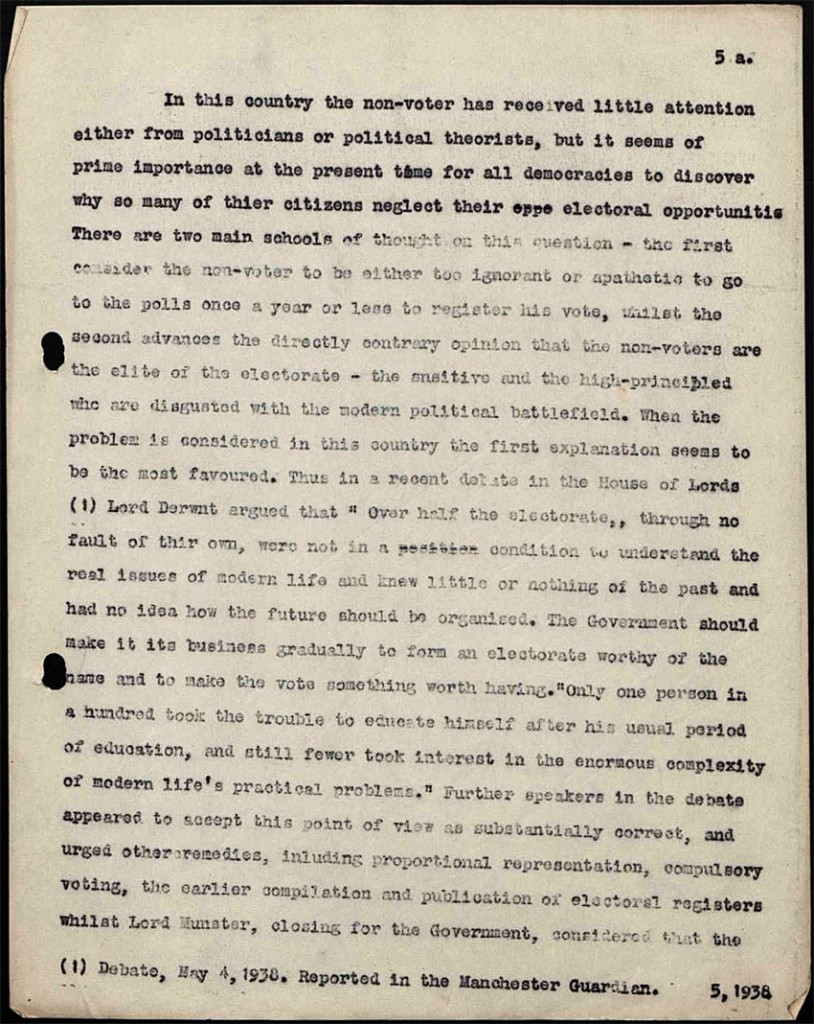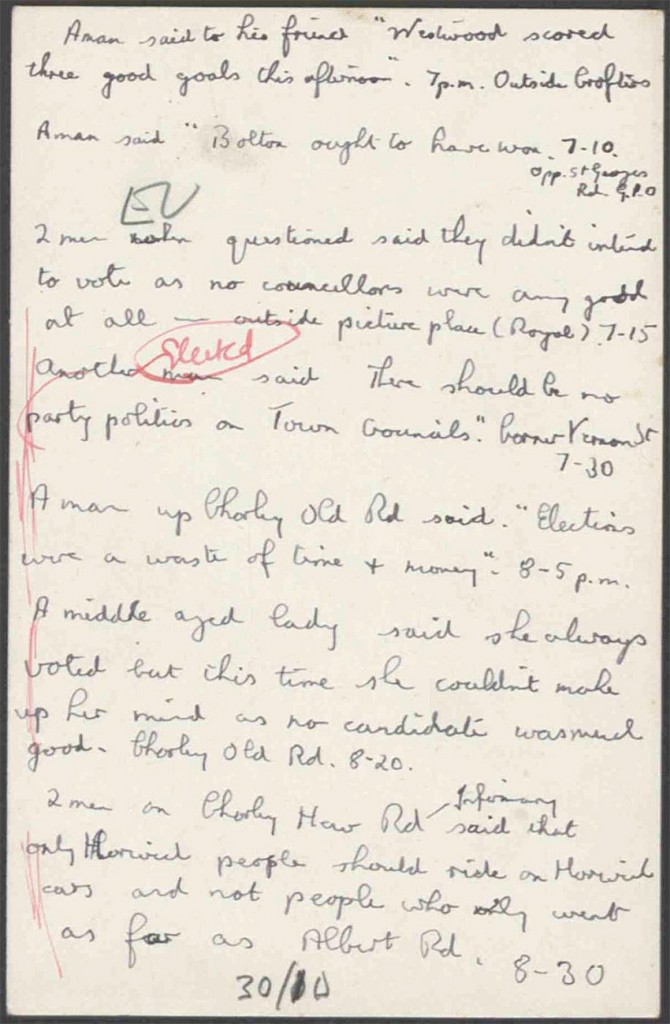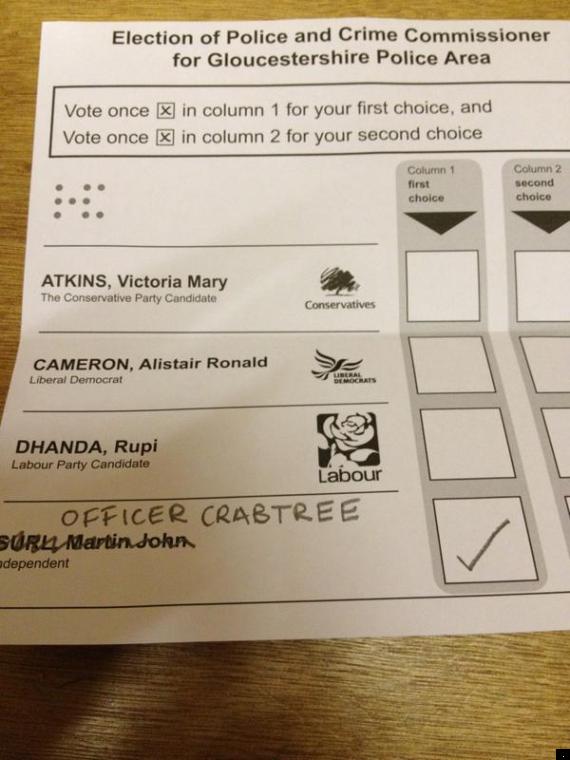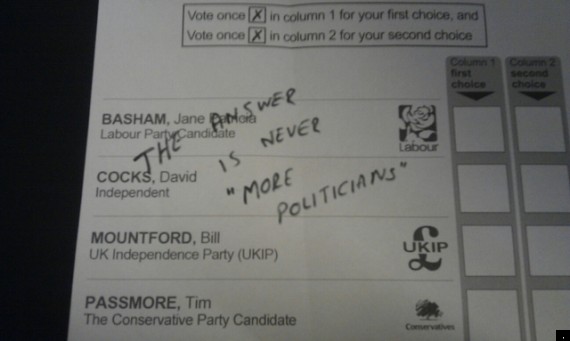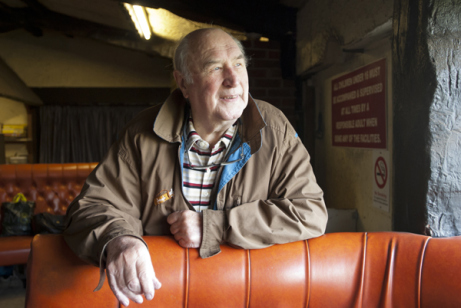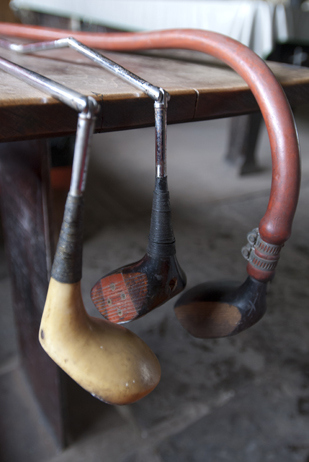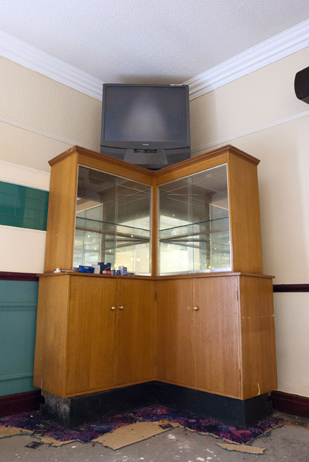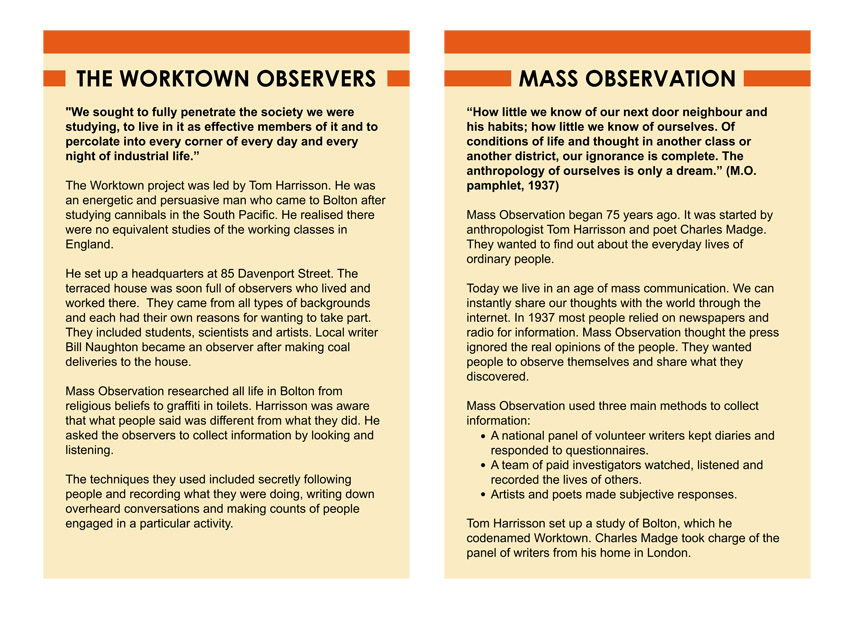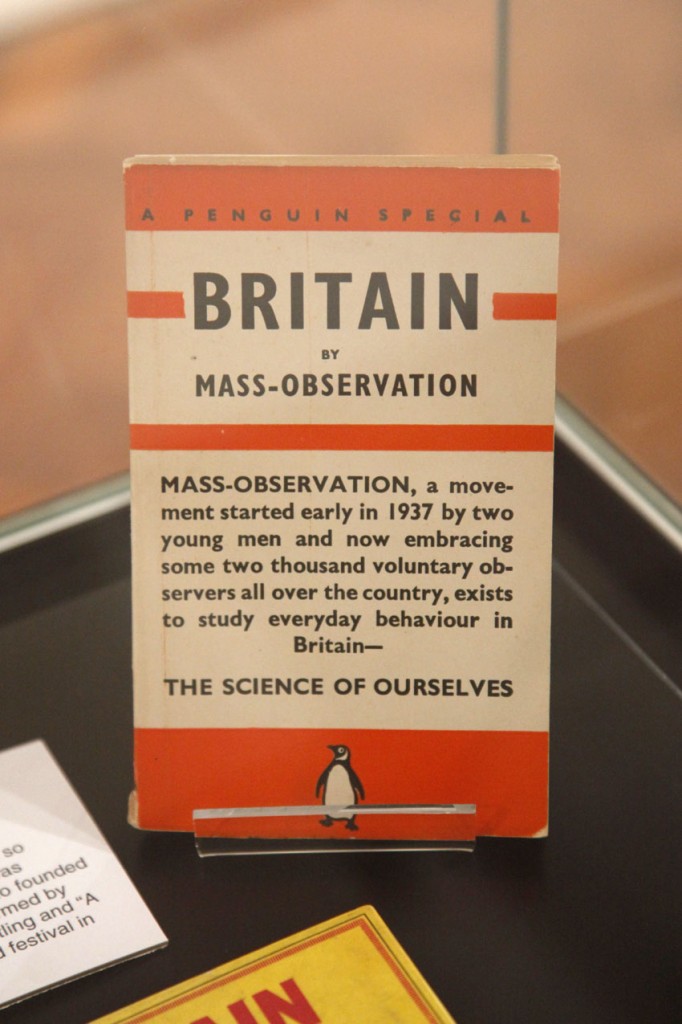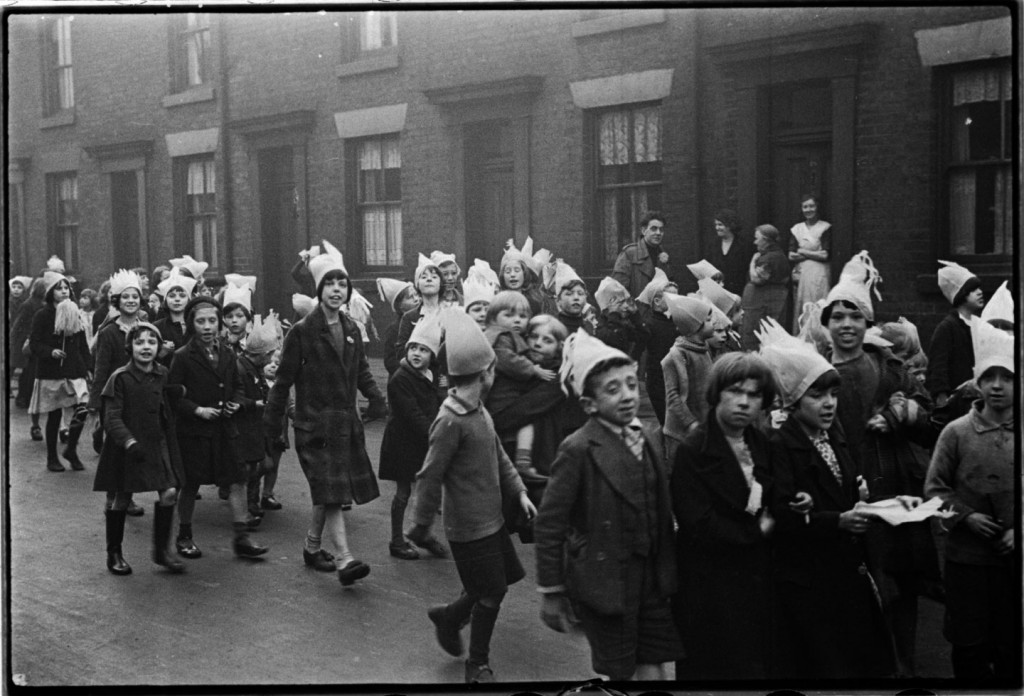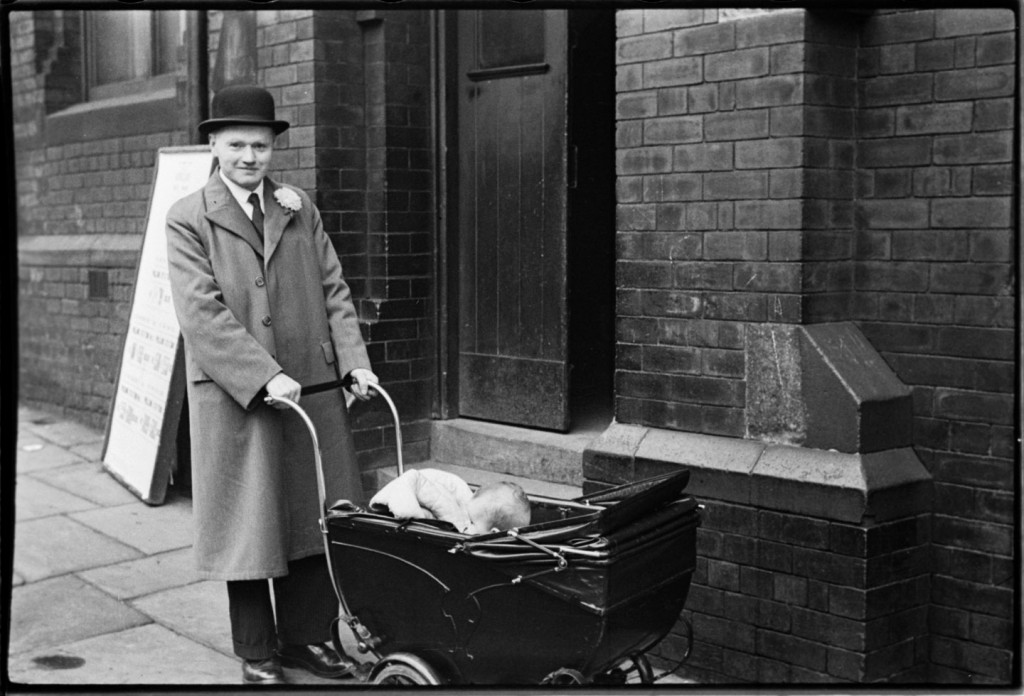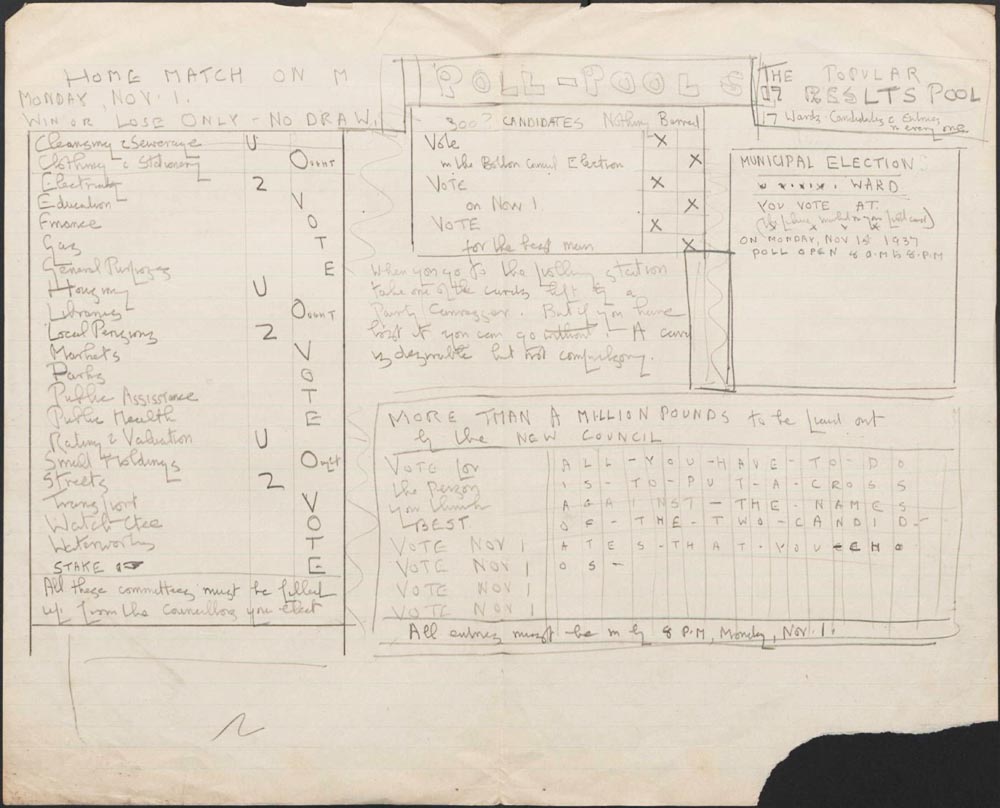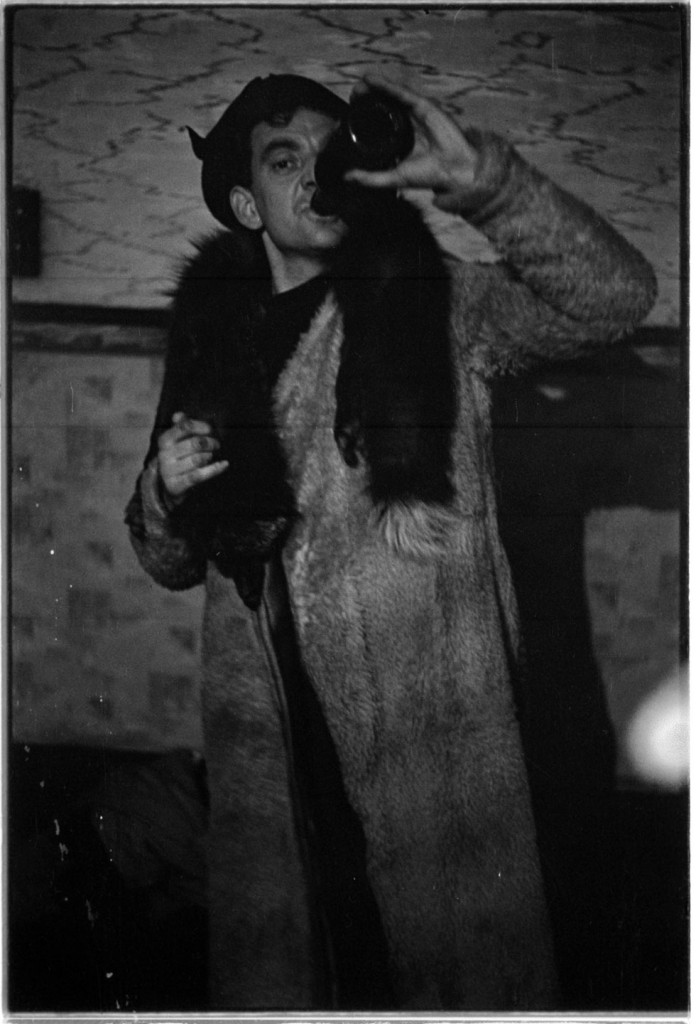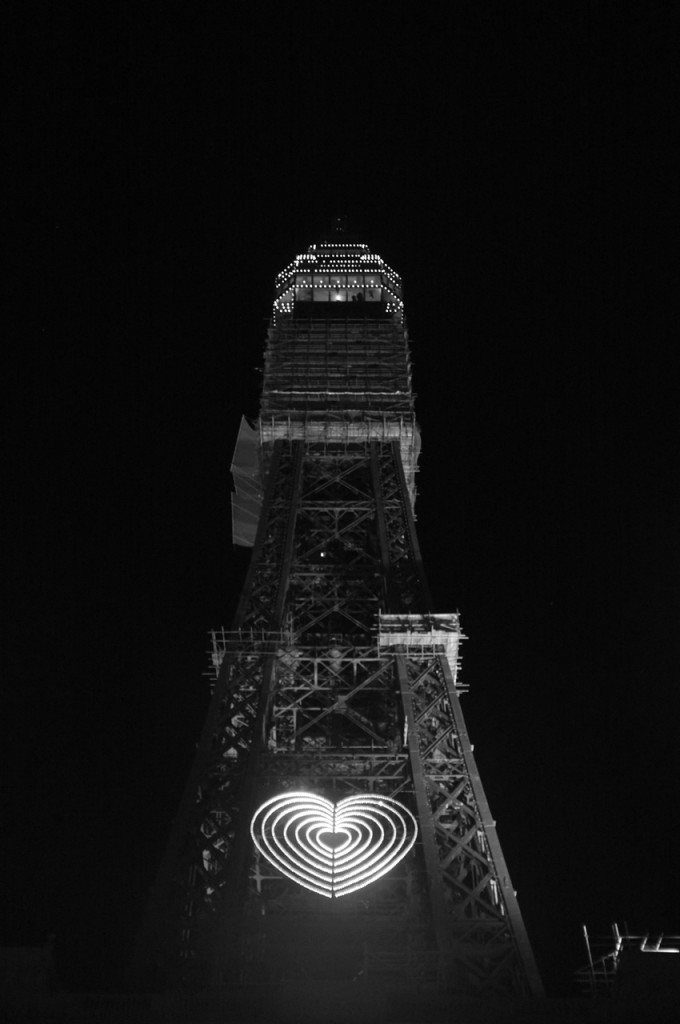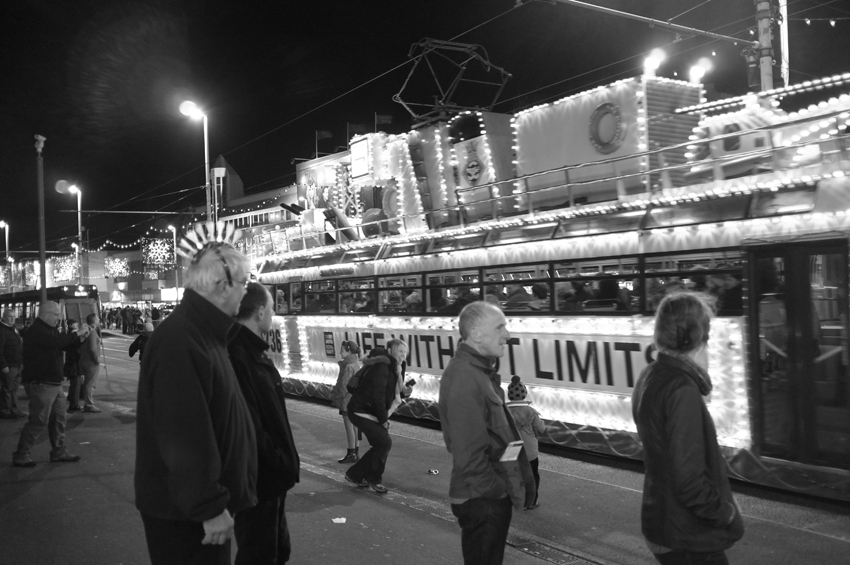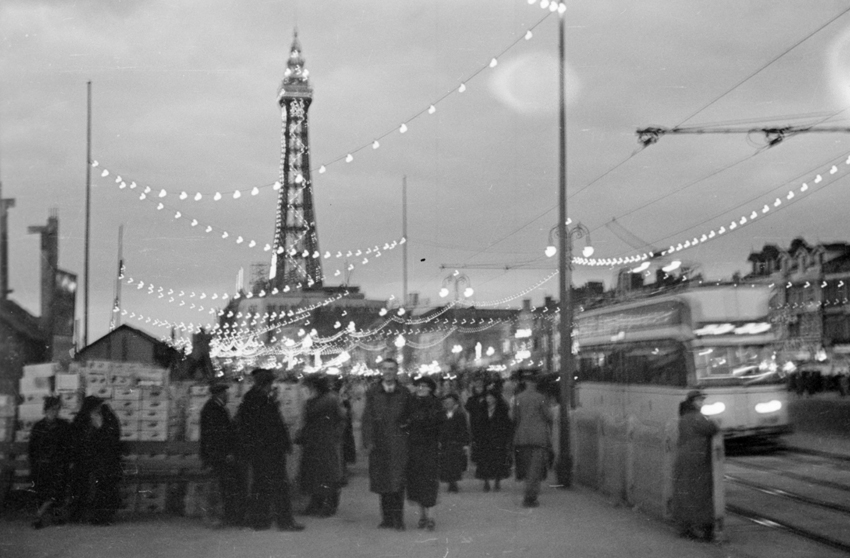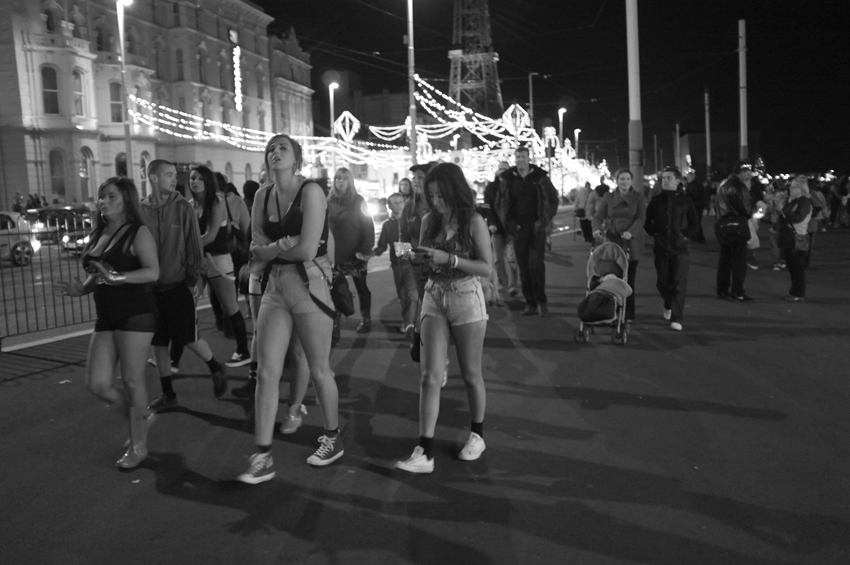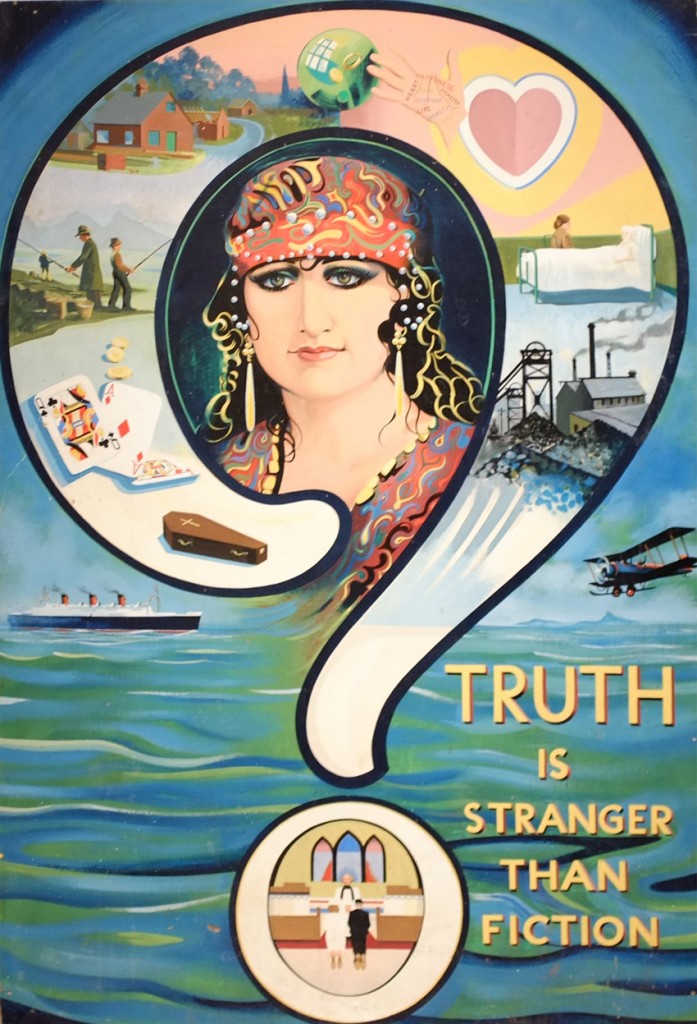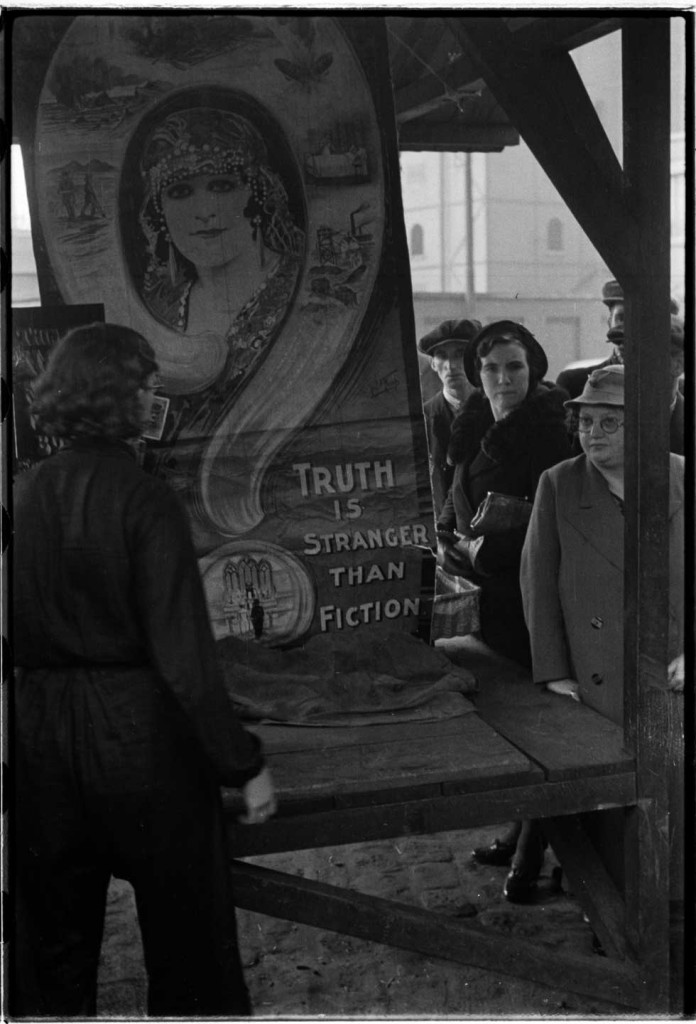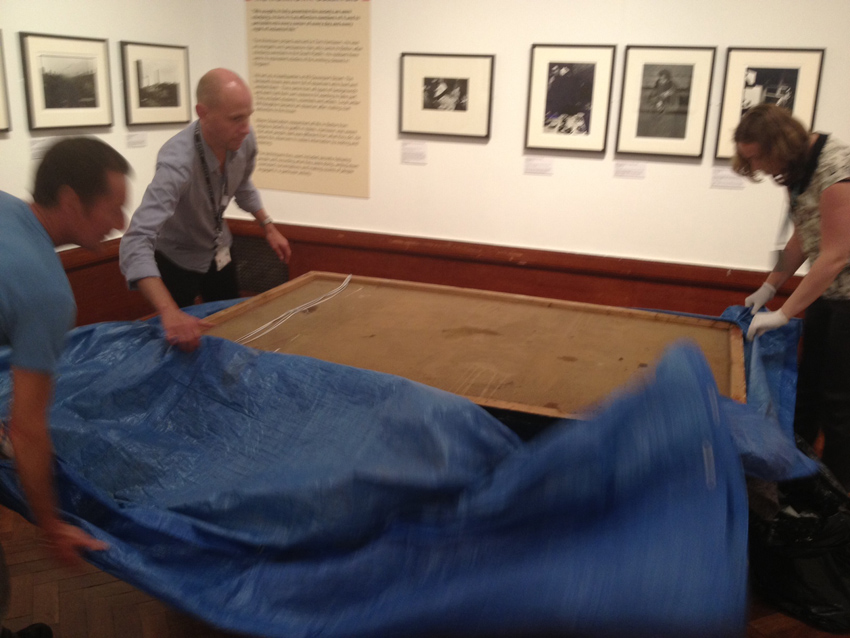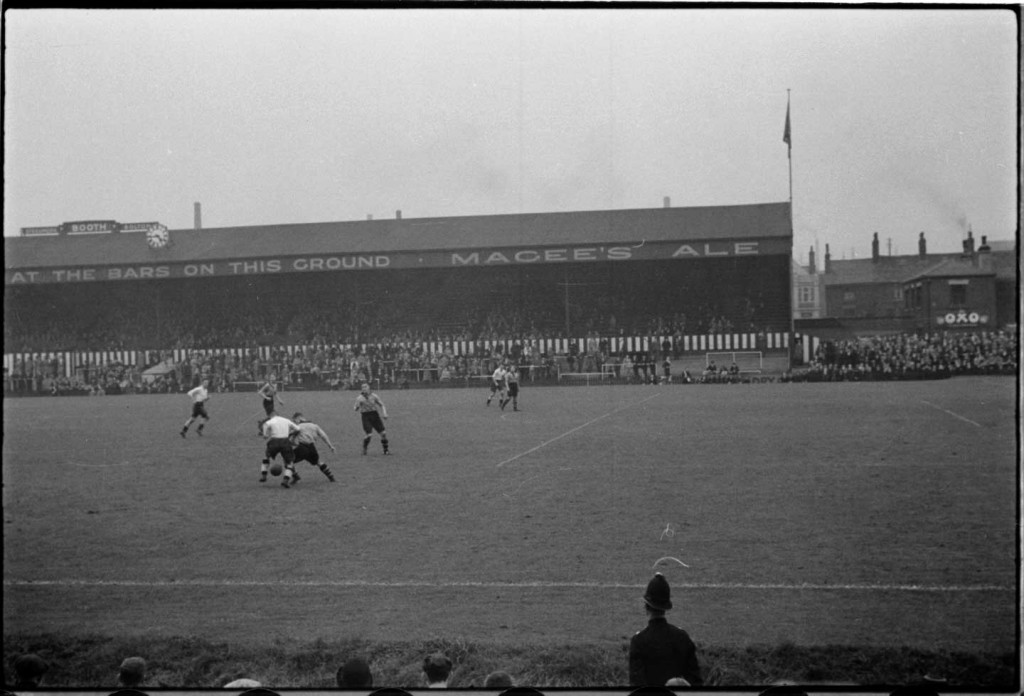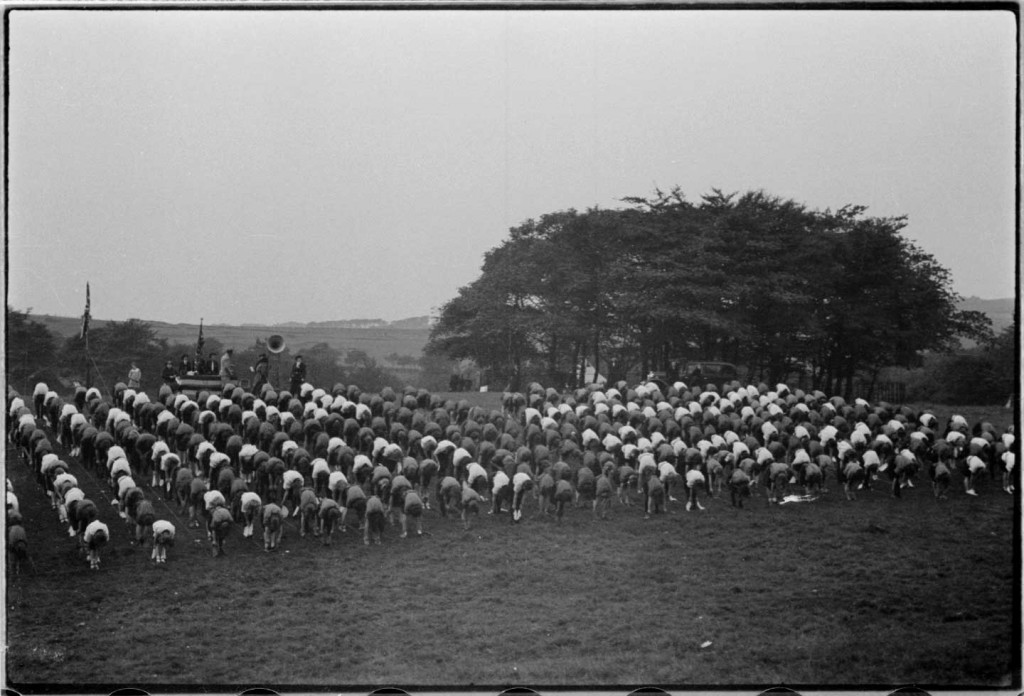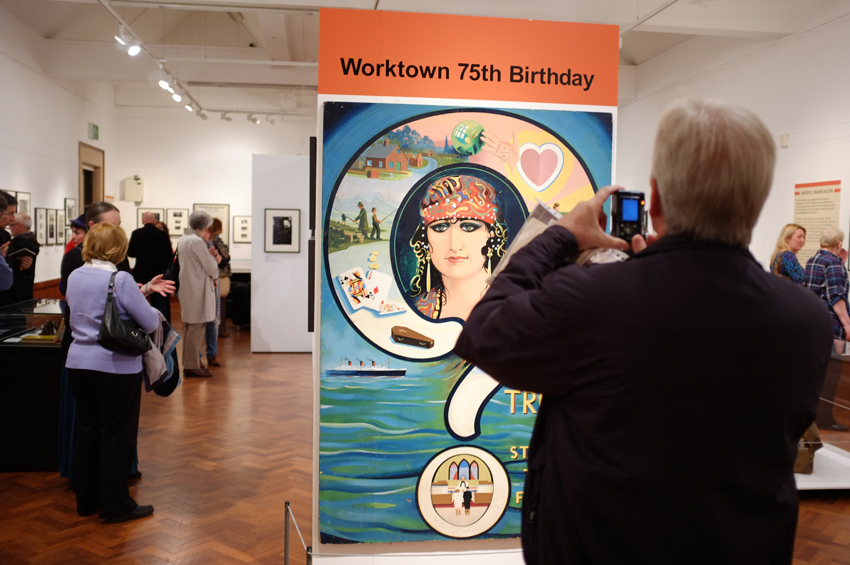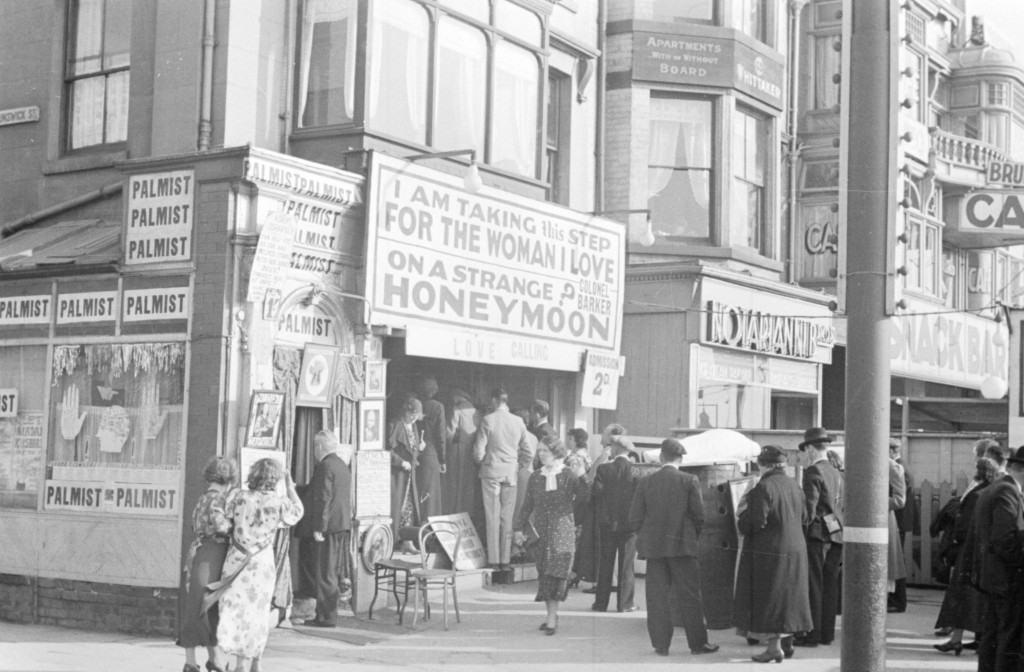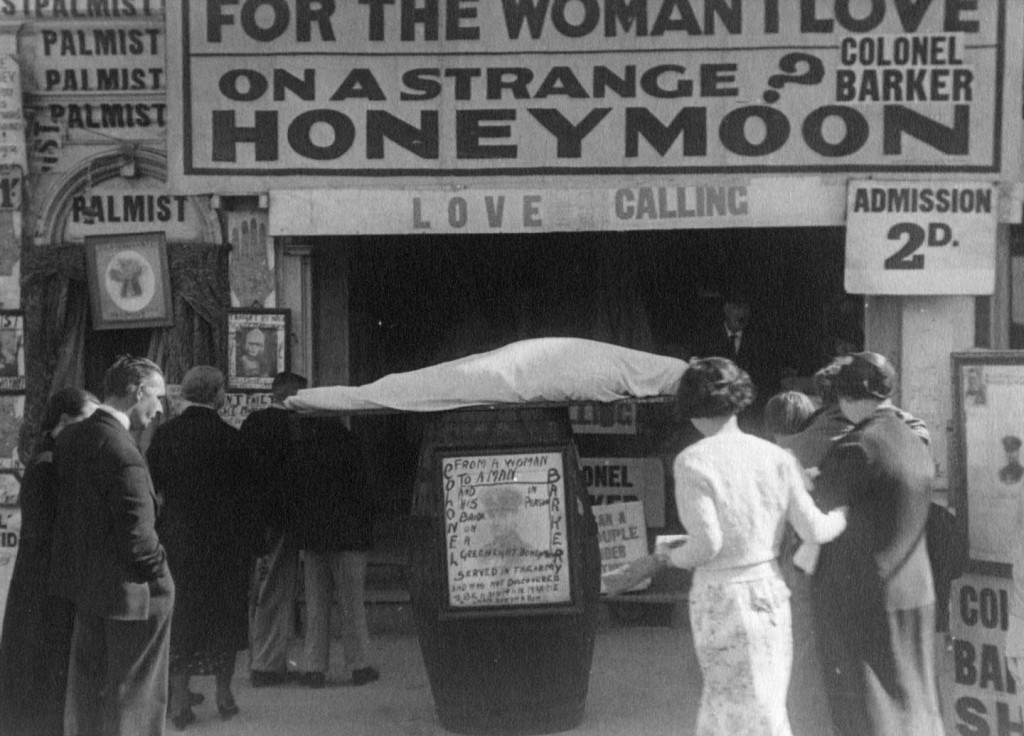

These extracts are taken from Mass Observation’s study of the non-voter in Bolton which was brought to mind by the extraordinarily low turnouts for this week’s police commissioner elections. The first extract is taken from a draft written by Tom Harrisson for a book on voting which was never completed. It’s interesting how the same debates go round and round- whether non-voting is a sign of apathy or protest. Harrisson’s conclusion in 1938 was that the non-voter was typically presented as ignorant and unwilling to participate responsibly in the democratic process.
MO struggled to find statistics from previous elections to inform their research and were breaking new ground in considering the non-voter. Today we are able to instantly access voting figures although there don’t seem to be many figures on spoilt ballot papers other than for the first candidate elected. Conservative Angus Macpherson became the first police commissioner elected with a turnout of 15.3% in Wiltshire. Spoilt ballots made up 3.3% of the total vote showing that a significant number of people cared enough to go and vote but did not agree with the election.


75 years after MO’s study the internet gives socially engaged people the opportunity to explain their actions in non-voting or spoiling their ballots meaning it is less possible to characterise them as apathetic and uninformed. Online campaigns were formed during the police elections encouraging spoiling of ballot papers and apparently a tumblr site was set up so that people could share their images of their papers. However it has been very difficult to find any evidence of this apart from on a couple of major news sites- the Huffington Post and ITV. The original images are no longer searchable on the internet. A shame because they are exactly the type of participatory observations which would have thrilled Mass Observation.
The Mass Observation documents are part of the Mass Observation Archive and can be purchased as a digital archive through Adam Matthew Digital




These photographs record a visit to Kearsley Golf Club and Manor Golf Club by current Spender scholar Richard Gaskill. The Humphrey Spender Scholarship was set up to create a contemporary response to the Worktown Archive. Richard will be documenting the theme of Sports, Spectacles and Spectators with photographs over the course of the next year culminating in an exhibition at Bolton Museum. You can follow the development of his project on his blog.
We’ll be featuring more modern Mass Observation projects here as the archive has inspired a lot of interesting responses.
If you’ve been to the Worktown 75th Birthday exhibition at Bolton Museum as well as visiting this site then perhaps you have noticed a design connection between them. Our web designer Perry was inspired by the iconic orange and cream design of the Penguin ‘Specials’ paperbacks and we continued the theme for the exhibition display panels.

One reason for this was to bring colour in to the exhibition which features over 80 black and white photographs. But there is another important reason for us to reference the design of the Penguin paperbacks. We wanted to emphasise the importance of mass market paperback publishing in the development of Mass Observation.

The Penguin Special Britain by Mass-Observation is featured in the exhibition. It was actually the second MO publication. The first was a report on May 12th 1937, the day of George VI’s coronation which was published by Faber and Faber. Mass Observation’s Worktown study of life in Bolton was partially funded by a third publishing imprint, Victor Gollancz’s Left Book Club. These new paperback publishers offered an alternative source of information and analysis to newspapers, which many people distrusted. New technologies meant that books could be swiftly printed and distributed in response to current events. The development of new media sources in the 1930s fed a change in society’s hierarchy with increasing literacy and leisure allowing the working classes to demand greater equality. As the adage goes… knowledge is power.
The exhibition is on until Sunday 2nd December at Bolton Museum.

On this day 75 years ago it was the municipal elections in Bolton. Mass Observation was involved with the Labour party campaign through observer Walter Hood, a staunch trade unionist. He can be seen in the back of this photograph of children who are marching in an election rally wearing paper hats. The leader of the Worktown study, Tom Harrisson was fascinated by this ritual. He saw parallels between it and the behaviour of the cannibal tribes he had studied in Borneo. I photographed the general election in Bolton in 2010 and came across hundreds of children with balloons which had been handed out by the Conservative and Labour party- blue and red respectively of course! A Labour party worker told me that they competed to make sure that more of their colour balloons had been handed out. It seems like the old ritual habits of us Northern cannibals are ingrained.

This is one of Labour’s candidates in the elections, William Joseph Allen. The photographs was identified last week by his granddaughter who had come to look around the Worktown exhibition at Bolton Museum. She told me that he did not have a baby at the time this photograph was taken and nor did any close member of his family. Her family had concluded that the baby had been borrowed for the photographic occasion. The ‘kissing the baby’ shot is evidently a traditional campaigning technique.

Mass Observation was interested in non-voters too. One of their main missions was to find out about the people who were ignored by the press and government. Tom Harrisson came up with the idea of political pool polls and this is a rough design of the idea. He reasoned that if people could fill out a complex pool coupon each week then they were more than capable of voting. It was just a case of making them feel that they could actually win something useful in the political pools. This document is in the Mass Observation Archive at the University of Sussex. We have recently added some documents from the archive to this site thanks to them and Adam Matthew publications. We have chosen documents, like this, which help the photographs to tell stories.

After a day of hard campaigning and last minute vote-chasing Walter Hood took the opportunity to kick back and relax. This is one of my favourite photographs in the Worktown Archive as it shows the humanity of the observers. I’ve no idea what circumstance led Walter Hood to hang out in lady’s clothes but I’m fairly sure that the beer played a part, and that the Mass Observers were having a right good time in Davenport Street that night.

Blackpool Tower 2012
We finished our day of talks on Mass Observation at Bolton Museum on Saturday by heading over to Blackpool (Holidaytown) in the footsteps of the original Mass Observers. It was good fun to join relatives of original observers Julian Trevelyan, Humphrey Spender and Michael Wickham taking in the Blackpool illuminations and Saturday night mayhem.


My main observation is that the Blackpool public are much more resistant to cold weather than they were in 1937!

Join us for an afternoon of free talks about Mass Observation, the Worktown project and Humphrey Spender’s pioneering documentary photography. The talks will be followed by a screening of Stranger than Fiction, a feature length documentary about the Worktown observers directed by Ian Potts.
Saturday 6th October, 12.30 p.m. – 5.00 p.m
12.30 An introduction to Mass Observation (Caroline Edge, University of Bolton)
1.00 Mass Observation and Photography (Russell Roberts, University of Wales, Newport)
1.30 Worktown’s Lost Locations (Ian Trumble, Bolton Museum)
2.00 Refreshments
2.30 Humphrey Spender: photographing the everyday in Mass Observation’s Worktown (Dr Robert Snape, University of Bolton)
3.00 Stranger than Fiction Film Screening

This painting was done by Walter Kershaw originally for the film “Stranger than Fiction” in around 1985. Kershaw is mural painter, from Rochdale, known for his large scale paintings. The painting is based on this photograph by Humphrey Spender, which we have been using in promotional material for the Worktown 75th Birthday exhibition at Bolton Museum.

This is probably the most iconic Worktown photograph, summing up visually what Mass Observation was about, certainly to Spender. It is also kind of textbook street photography- find an interesting sign and wait for the moment. Of course Spender was one of those writing the textbook.
The painting makes a stunning opener to the show. It was very kindly loaned to us by Ian Potts and his wife Jill who respectively directed and produced “Stranger than Fiction” which we are showing in the Museum’s lecture theatre on the 6th October. They brought it up for us on the day of the exhibition preview on their roof rack- not the typical museum transportation method. It gave us that all important oh my god what the hell are we going to do last minute exhibition rush. Here we are 30 minutes before the doors of the exhibition open, honestly not stressed at all!

On this day 75 years ago….

Bolton Wanderers reserve team played at home against Wolverhampton Wanderers Reserves in the Central League. As people couldn’t travel to away games in the 1930s reserve games drew big crowds. Over 5000 attended this match to see Bolton reserves win 4-0. The first teams drew 1-1 at Molineux, Wolves’ ground, on the same day.

Girl Guides formed a human Union Jack at a campfire rally at Hollinhurst, Bolton. They had come up with the display for the King’s Coronation which took place on 12 May 1937 and took the opportunity of a local guide gathering to show it again. I’m so glad they did as this is one of my favourite of Humphrey Spender’s Worktown photographs.

Bolton Museum’s exhibition opened on Saturday and is on until 2 December. We are holding an afternoon of talks on the 6 October 12.30-5 pm in the Museum’s beautiful Art Deco lecture theatre followed by a screening of Ian Pott’s film about the Worktown observers “Truth is Stranger than Fiction”. Everything is free, everyone is welcome and refreshments will be provided. Will post more details shortly.

Colonel Barker by Humphrey Spender (copyright Bolton MBC)
The sideshow featured Colonel Barker in bed in a pit separated from a woman wearing a nightdress in an another bed by a row of belisha beacons. Scandal loving tourists could view the scene from above, and rain insults down on the unfortunate couple. Although the advertising claimed that the Colonel was watched in the pit, day and night, the Mass Observation Archive records that an observer shared lodgings and enjoyed many a whisky of an evening with the Colonel.

Colonel Barker by Julian Trevelyan (shown courtesy of Philip Trevelyan)
This seems an incredible story, but in a bizarre twist which would have delighted the coincidence friendly Mass Observers history has repeated itself. Gemma Barker was jailed in March this year for deceiving two female friends into thinking that she was a boy and forming relationships with both of them. She used Facebook to construct 3 male alter egos and wooed them through online messaging. Astonishingly neither of the girls recognised their friend or realised that she was a girl. Truth is stranger than fiction.
